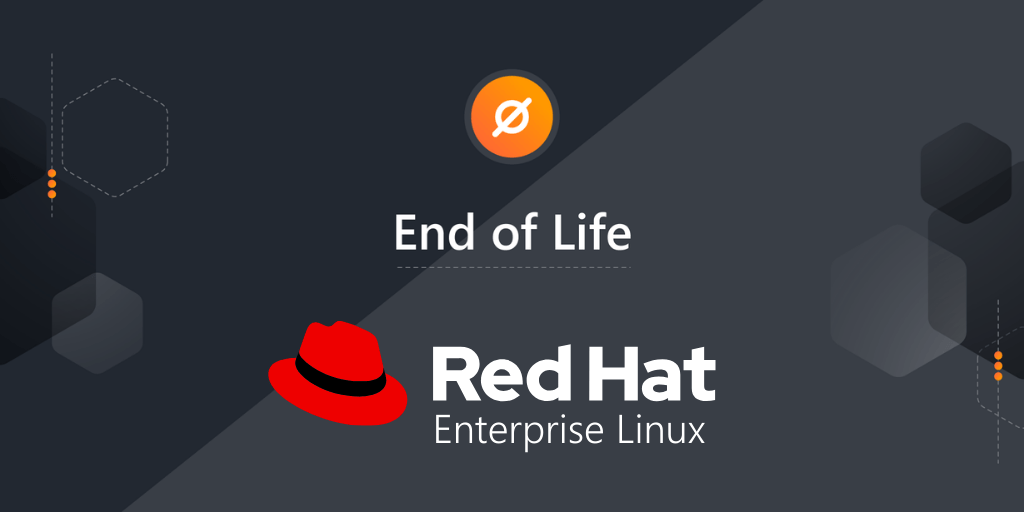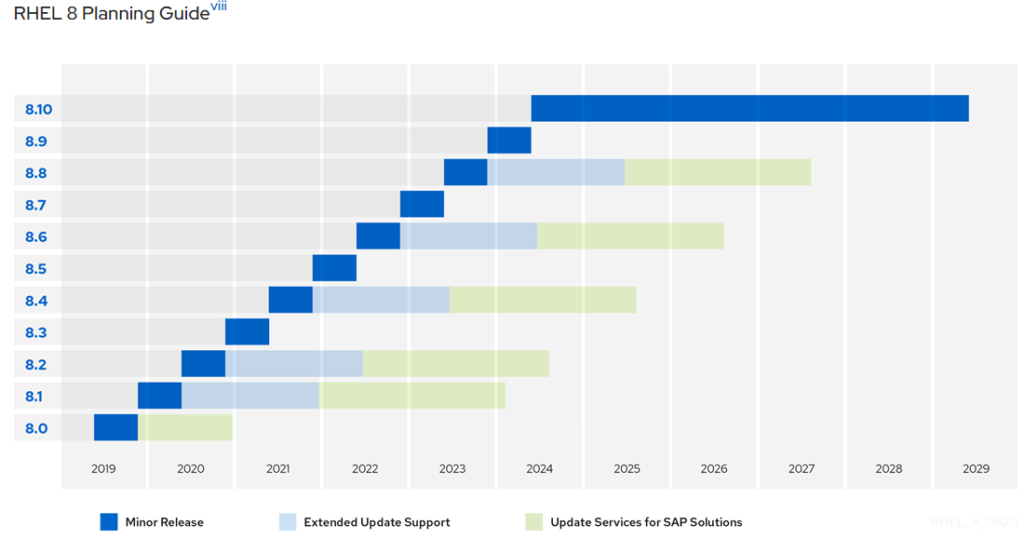
Red Hat Enterprise Linux 6 & 7 both have end-of-life stages ending on June 30, 2024. Since Red Hat’s life cycle is quite complex, it can be hard to keep track of when each version will go end of life. This guide and report should help you manage your Red Hat installations more efficiently.
⚡ TL;DR | Go Straight to the Red Hat Enterprise Linux End of Life Audit
What is Red Hat Enterprise Linux?
Red Hat Enterprise Linux is an enterprise Linux operating system designed to provide a consistent foundation across environments. It prides itself on being able to provide services and workloads fast, reduce deployment friction and costs while decreasing time to value for critical workloads. This allows development and operations teams to work together more efficiently.
Red Hat Enterprise Linux Life Cycle
RHEL basically has two separate life cycles. One for the major version and one for minor versions. Major versions have 3 stages (4 for RHEL 7). Full Support (5 years) and Maintenance Support 1 (5 years) (and Maintenance Support 2 for RHEL 7), followed by an Extended Life Phase.

During full support and maintenance support Critical and Important Security errata advisories (RHSAs) and Urgent and Selected (at Red Hat discretion) High Priority Bug Fix errata advisories (RHBAs) will be released as they become available. Other errata advisories may be delivered as appropriate. While in full support, new or improved hardware enablement and select enhanced software functionality may be provided, generally in minor releases. Maintenance support does not receive these new functionality or new hardware enablements.
During the extended life phase, Red Hat will only provide limited ongoing technical support, no bug fixes, security fixes, hardware enablement or root-cause analysis.
Additionally, minor versions also have 3 stages. Starting with release support (6 months following release), followed by add-ons that can be purchased for specific versions for both extended update support and update services for SAP solutions.

Red Hat Enterprise Linux 6 & 7 End of Life
On June 30, 2024 both RHEL 6 and RHEL 7 will have changes happend to their lifecycle status.
RHEL 6 has its Extended life cycle support (ELS) add-on ending, which means the only remainig lifecycle status still ongoing is what Red Hat labals as „Extended life phase„. Red Hat lists that operating systems that are in the Extended life phase get „No bug fixes, security fixes, hardware enablement or root-cause analysis„.
RHEL 7 has its Maintenance Support phase ending on June 30. Meaning it has its ELS phase and extended life phase still remaining.
The Extended Life-cycle Support (ELS) is an Add-On subscription for some RHEL subscriptions. The ELS Add-on is available during the Extended Life Phase for RHEL 6 and RHEL 7.
Red Hat Enterprise Linux 8 End of Support
Full Support will end for RHEL 8 on the 31st of May 2024. The product will enter its Maintenance Support stage meaning it will still receive updates for security advisories and high-priority bug fixes, but no new functionality or hardware enablement will be provided. The product will remain in Maintenance Support for the next 5 years until May 31st, 2029. If you would like to remain in full support, you can upgrade to RHEL version 9. On top of being fully supported, RHEL 9 boasts a number of new features which you can explore in the release notes.
Find Outdated Red Hat Enterprise Linux Instances in Your Network
It can be very difficult to find out exactly when support for a specific version will end due to all of these variables and the lack of data on RHEL’s support website.
Luckily we’ve compiled a list of RHEL 7, 8, and 9 versions along with their EOL dates and created a report which shows the different dates along with the maximum EOL date to make things a little easier. You can get the report via the link below.
